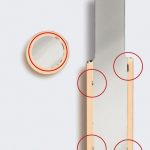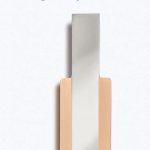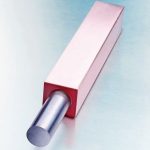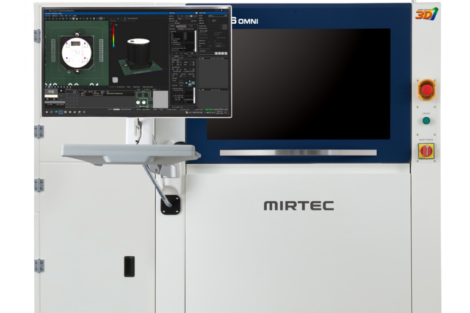An electrical engineering firm supplying the automobile industry welds several thousand copper wire ends to the coils of electric motors every day. The results of the previously used soldered electrodes were too variable and uncertain for them, which is why since the autumn of 2014, they have been using the WHG3 resistance welding electrode. This is a form of the Triconstant electrode from Wolfram Industrie and ensures more exact, reproducible results for point, seam, projection, and butt welding. A tungsten or tungsten-lanthanum insert is back-cast with copper. The exact configuration of the resistance welding electrode is precisely adapted to the materials that will be joined. Only then is a solid weld guaranteed. A version with added pure copper is available as well. While copper reduces the mechanical strength of the electrode, it also improves current transmission and heat dissipation. In certain cases, this can significantly improve durability.
“We achieve the special combination of the different materials with precise process control where the temperature gradients, times, and also pressure gradients play an important role,” explains Michael Bisaha, Product Manager Composites. Resistance welding electrodes made of various materials offer significant advantages, when they are optimally combined with each other. For example, their shafts and working surfaces are able to better withstand high thermal and mechanical loads, in addition to offering technical and economic benefits. From an application technology perspective, the best possible combination of hardness and elasticity, as well as, thermal and electrical conductivity is produced and economically, high durability is combined with better quality, and therefore greater efficiency.
Combination based on infiltration and surface wettability
Compared to competing materials, such as pure copper, pure tungsten, copper-chrome-zirconium combinations or a soldered tungsten-copper-chrome-zirconium combination, the WHG3 is made of back-cast tungsten-copper-WCu composite materials. This offers better results, in terms of hardness and strength, electrical and thermal conductivity, heat resistance, erosion, adhesion tendency and durability. “The respective values not only depend on the geometry, but also on the point welding machine, the welding parameters used and the materials being welded,” says Bisaha about the expected results. “By using various inserts – such as pure tungsten or tungsten, with for example, WLa20 or WCe20 doping – the heat resistance and conductivity can be individually adapted.” The resistance welding electrode also does not have a sandwich structure like other typical composite materials, since the combination is based on infiltration and surface wettability. The company fabricates the Triconstant electrodes according to the respective customer requirements and drawings. Both the power spectrum and requirements for the concrete dimensions are considered.
Benefits of welded versus soldered joints
The special properties of the electrode material are extremely important for optimum work results. The point forces used to press two opposing electrodes against each other in resistance welding often lie in the range of several kN, depending on the material and process. Therefore, the sufficient mechanical strength of the electrode has to be guaranteed for the entire service life.
However, the pronounced alternating thermal load often causes severe electrode wear. The electrodes are stressed in a rapid sequence with short severe-amperage current pulses of several kA, that are in some cases applied for less than 100 ms. The better the thermal and electrical conductivity, the greater the durability. Here, back-cast electrodes offer benefits because the properties of soldered electrodes can vary significantly from one electrode to the next.
Structure of the electrode
“Realising a reproducible, non-porous solder joint is not technically feasible at this time,” Bisaha reports. “The connection, and therefore also the electrical contacting change, which means the resistance, and also the welding behaviour, can fluctuate quite significantly between individual electrodes.”
In general, the company works exclusively with tungsten or composite materials, such as tungstite, for example made of tungsten and copper or tungsten and silver. “This is an infiltration composite material where a porous sintered body made of tungsten is infiltrated with copper or silver,” says Bisaha. Typical applications are found in eroding or contact material.
Zusammenfassung Résumé Резюме
Der Artikel zeigt eine Alternative zu herkömmlichen Lötverfahren: hintergossene Widerstandsschweißelektroden, die aus Wolfram, Kupfer und Wolframkupfer hintergossen sind. Neben längerer Standzeit und Leistungsvermögen ermöglichen diese eine verbesserte reproduzierbare Qualität der Punktschweißungen inklusive einer effizienten Fertigung.
L‘article d’écrit une alternative aux procédés de brasage conventionnels: les électrodes de soudage par résistance en fonte, qui sont en tungstène, cuivre et cuivre tungstène. En plus d‘une durée de vie et d‘une performance plus longues, elles permettent une meilleure qualité de reproduction dans les soudures par points, y compris une production efficace.
В статье рассматривается альтернатива традиционным методам пайки: электроды для контактной сварки, выполненные из вольфрама, меди и медно-вольфрамового сплава. Помимо длительного срока службы и мощности они обеспечивают более высокую повторяемость при выполнении точечной сварки, а также более эффективное производство.














